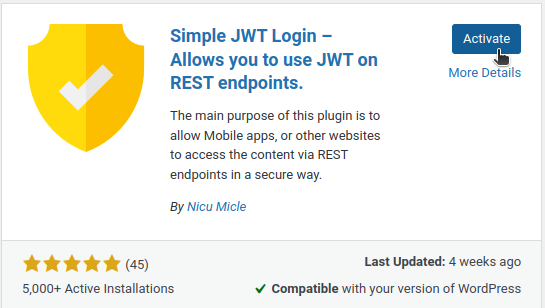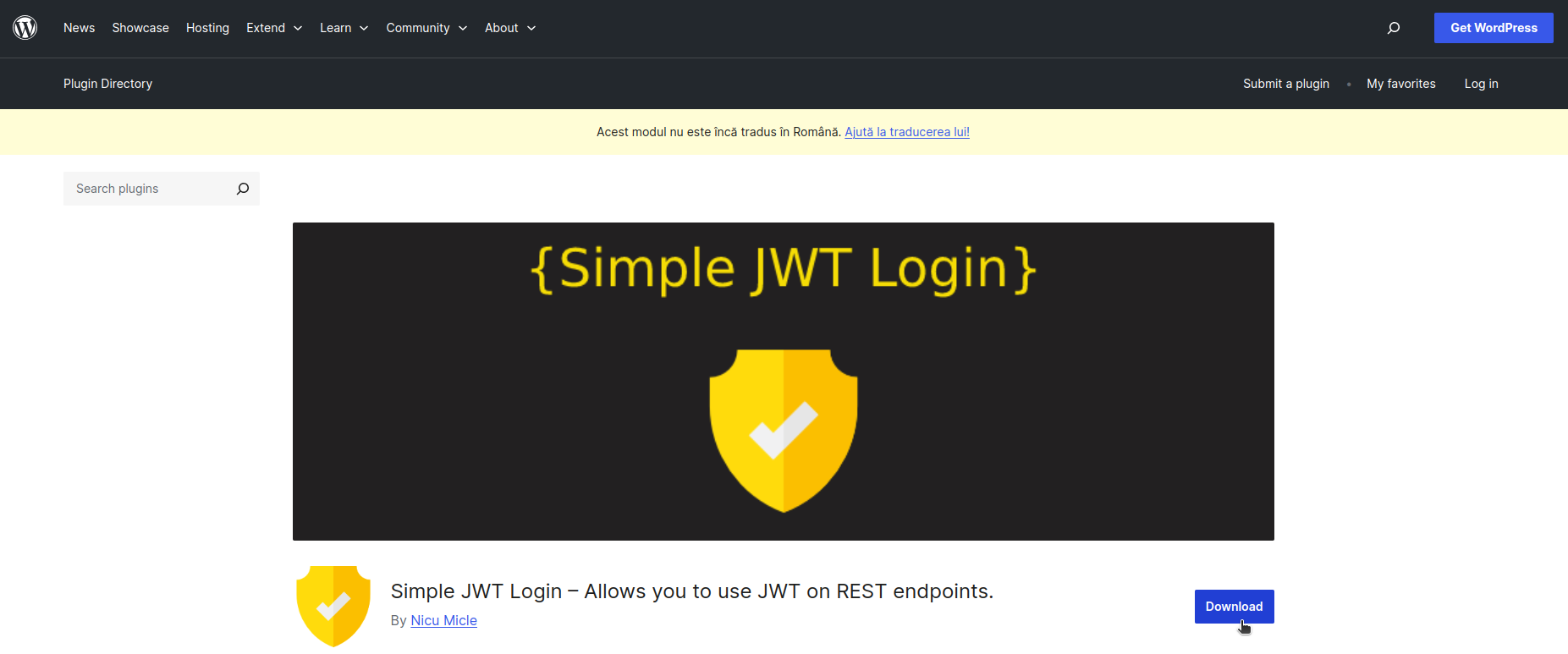Introduction
Simple-JWT-Login is a FREE WordPress plugin that allows you to use a JWT on WordPress REST endpoints.
Simple-JWT-Login enhances the WordPress REST API with JSON Web Token (JWT) authentication, ensuring a secure connection for mobile apps, external websites, and third-party services to access your WordPress content via REST endpoints.
The main purpose of this plugin is to allow Mobile apps, or other websites to access the content from a WordPress website via REST endpoints in a secure way.
Requirements
Before installing Simple-JWT-Login, ensure your system meets the following requirements:
- PHP version >= 5.5
- WordPress version >= 4.4.0
Licence
Simple-JWT-Login is open-source and distributed under the GPL 3.0 License.
Installation Guide
Setting up Simple-JWT-Login is quick and easy. Choose one of the following installation methods:
Method 1: Install from WordPress.org (Recommended)
-
Go to the Plugins menu in WordPress and click "Add New".

-
Search for "Simple JWT Login" and select "Install Now".

-
Activate the plugin when prompted.

Method 2: Download and Install Manually
-
Click "Download" to get the latest Simple-JWT-login plugin version.

-
Upload the
.zipfile in your WordPress plugin directory.
-
Click "Install Now" and Activate the plugin.

Now that you've installed the Simple-JWT-Login plugin, you're ready to configure it and start using JWT authentication for your WordPress REST API.
Check out the Configuration Guide for the next steps!